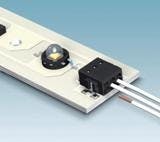The increasing luminance of HB-LEDs is opening up more and more areas for solid-state lighting (SSL). But HB-LEDs generate a lot of heat, requiring a robust cooling scheme, and for this reason HB-LEDs are often mounted on metal-core printed circuit boards (PCBs) to improve cooling. The metal core provides efficient cooling, but is not compatible with conventional through-hole connectors that ensure fast and easy wiring of the LED boards. Design teams need an interconnect scheme that is compatible with automated surface-mount technology (SMT) PCB manufacturing and assembly processes.
Miniature push-in PCB terminal blocks can solve the interconnect problem. Design teams need to choose products that are capable of quick wiring, and that meet the mechanical and thermal requirements of SMT assembly lines. This article investigates the requirements placed on SMT-capable PCB terminal blocks.
++++++
This article was published in the July/August 2010 issue of LEDs Magazine. To read the full version of this article, please visit our magazine page, where you can download FREE electronic PDF versions of all issues of LEDs Magazine. You can also request a print copy of LEDs Magazine (available by paid subscription) and sign up for our free weekly email newsletter.






